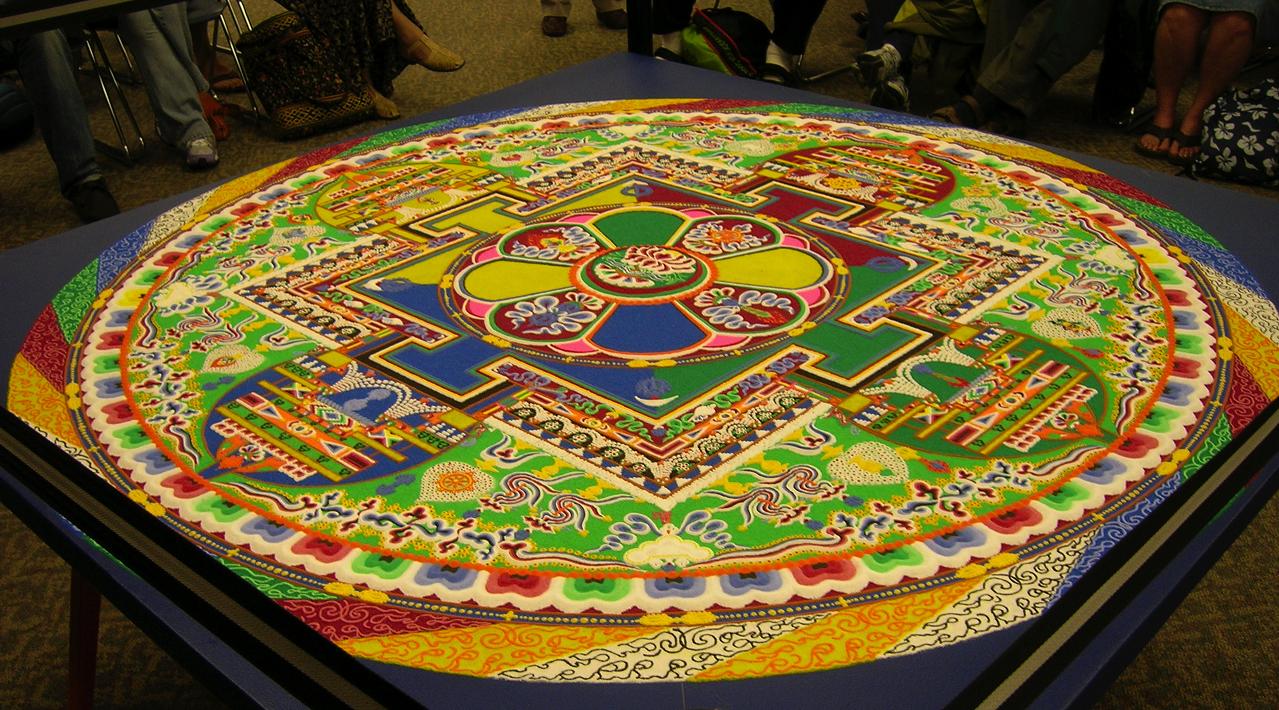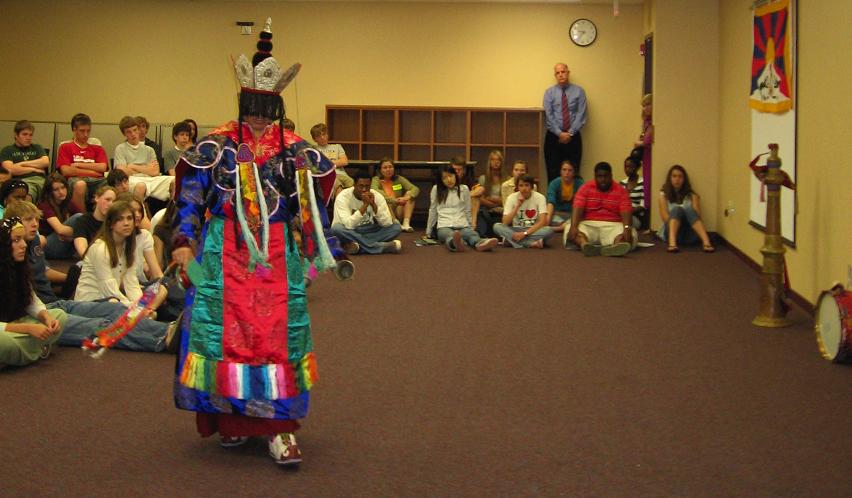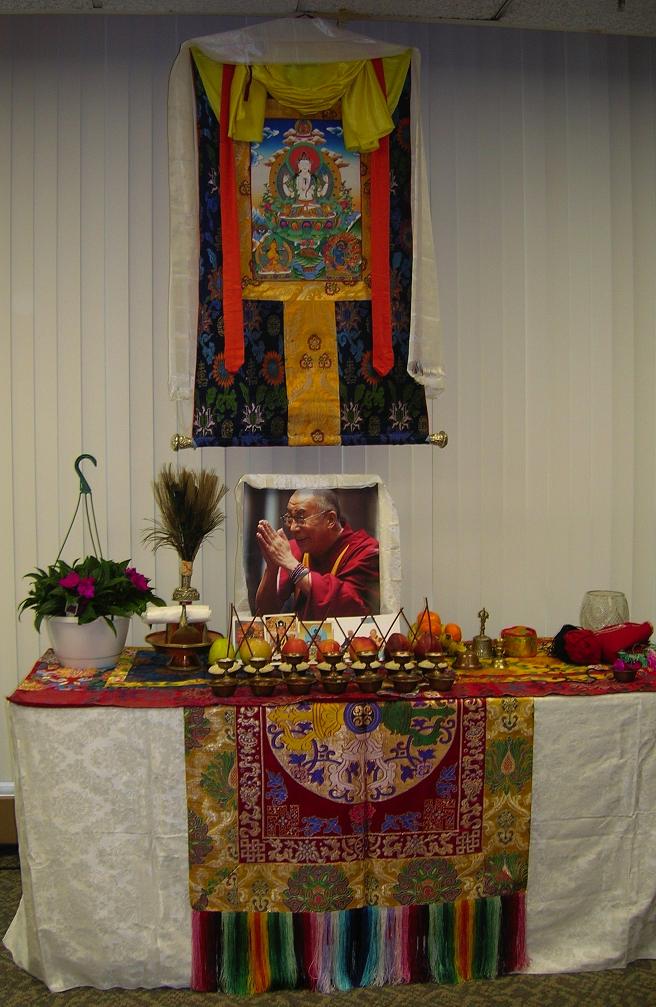| Serving
over 25 millions NRIs worldwide |
|
|||||||||||||||
NRI
News |
|||
TIBETAN MONKS
IN AMERICA’S HEARTLAND Indianapolis, April 30, 2007 Eight Monks from Drepung Gomang Monastery in South India visited Indianapolis for a week this April. They brought their ancient spiritual wisdom and the “Sacred Art of the Land of Snows;” created a very sacred, elaborate, and ceremonial Mandala at the University College on the IUPUI Campus; visited and performed sacred dances and chants at St. Luke’s United Methodist Church; and brought their blessings to the Brebeuf Jesuit Preparatory School in Indianapolis. The Monk’s visit at Brebeuf Jesuit was sponsored by The Asian Club, moderated by Mrs. Janice Singh.
The Monks are on a Tour of the United States to promote religious harmony and world peace; raise awareness of the plight of the Tibetans under Chinese occupation of Tibet and continuing violence and destruction of Tibetan heritage; and raise funds for 2,000 Tibetan refugees to provide for their education, housing, food, medicine, and other critical needs. The Gomang Monks visit and appearances in Indianapolis were coordinated by International Tibetan Independence Movement and its President Larry Gerstein.
Drepung Gomung Monastery Cultural Pageant Program gave a little sampling of Sacred Music, Sacred Dance to “build a foundation of friendship, inner peace, and compassion.” They began with the playing of a few notes on the Tibetan long horns, much like calling the faithful to prayer and then began the Chanting of Jam Chenma (Madyamikavatara). There was an aura of peace as they recited the prayer. There were subtle natural voice transitions and distinct sound modulations as they chanted in perfect harmony. They practice a unique chanting style, focusing inward to what many faith traditions reveal as “the God-Center within.” Besides the Tibetan long horns, the other musical instruments used during the performance were small double-faced drums, hand-held drums, Temple bells, cymbals, and brass oboes. The composite sounds of their musical instruments rose and fell with orchestral precision to the accompaniment of vocal chants as the story was being enacted through dance and song. They displayed tremendous control over their vocal faculties and introduced us to new sounds through their chants. The cultural rhythms and sound textures seem suspended between heaven and earth. Their dances revolve around myth and mythology, folklore and legends, and touches of contemporary humor where appropriate (as in the Yak Dance). There is grace and discipline in their movements (as in the Dance of the Dakini, The Celestial Travelers) and in complete harmony with a primitive musical arrangement. Yak Dance has an ancient origin, which may be 5,000 years old. The Yak, an American Bison-like animal, considered a messenger of God, is a source of meat, milk, transportation, and clothes. The Yak also represents a Tibetan symbol of strength, resilience, and resourcefulness. The Monks explained that prayers are important to remove impediments, for inner peace, harmony, and compassion. They wear simple orange and red robes, contagious innocent smiles, masking a deep sadness yet exuding great optimism; there is something other-worldly about these visitors from a distant land. We come away with a feeling that they are a part of our Asian extended family and their work and worship is for the uplift of all humanity. CLOSING CEREMONY: The ClosingCeremony at the University College at IUPUI Campus was an elaborate affair of sacred chants and traditional ceremonial rituals, explanations, and interfaith prayers under the “spiritual presence” of His Holiness The Dalai Lama. His portrait, placed on a table with the elaborate decorations and traditional elements of worship across from the Sand Mandala, seem to bless the ceremonies and the multi-faith audience of students, faculty, and faith leaders. At the end the beautiful Mandala created so painstakingly over five days was destroyed and the “ashes” collected in a sacred urn. Small packets of sanctified sand were offered to the gathering as a blessing. The Monks, accompanied by people then carried the urn in a procession to the White River and the Mandala sand was ceremonious surrendered to the water after final prayers and playing of trumpets as a part of the immersion ceremony. The Closing Ceremony symbolized the impermanent nature of life, all creation, and our temporal experiences. Kanwal Prakash “KP” Singh
|
|||





